Objective: New shielding/unshielding flow
In the new web extension, we’ve changed the shielding and unshielding flow to a slightly more decentralized process. Now for ETH and ERC20, you can participate in each step, and retry failed transactions without needing anyone to intervene.
A new shielding/unshielding process for BTC will be added after releasing portal v4.
How it works
Shielding:
We’re removing temporary addresses. To shield tokens, you now enter your Incognito address, connect your Metamask wallet (more options coming soon), then initiate the transaction. After the external blockchain confirms the transaction, the Incognito network locks your original tokens, and you personally initiate the minting of privacy coins to your Incognito address.
Extension mockup - Shielding:
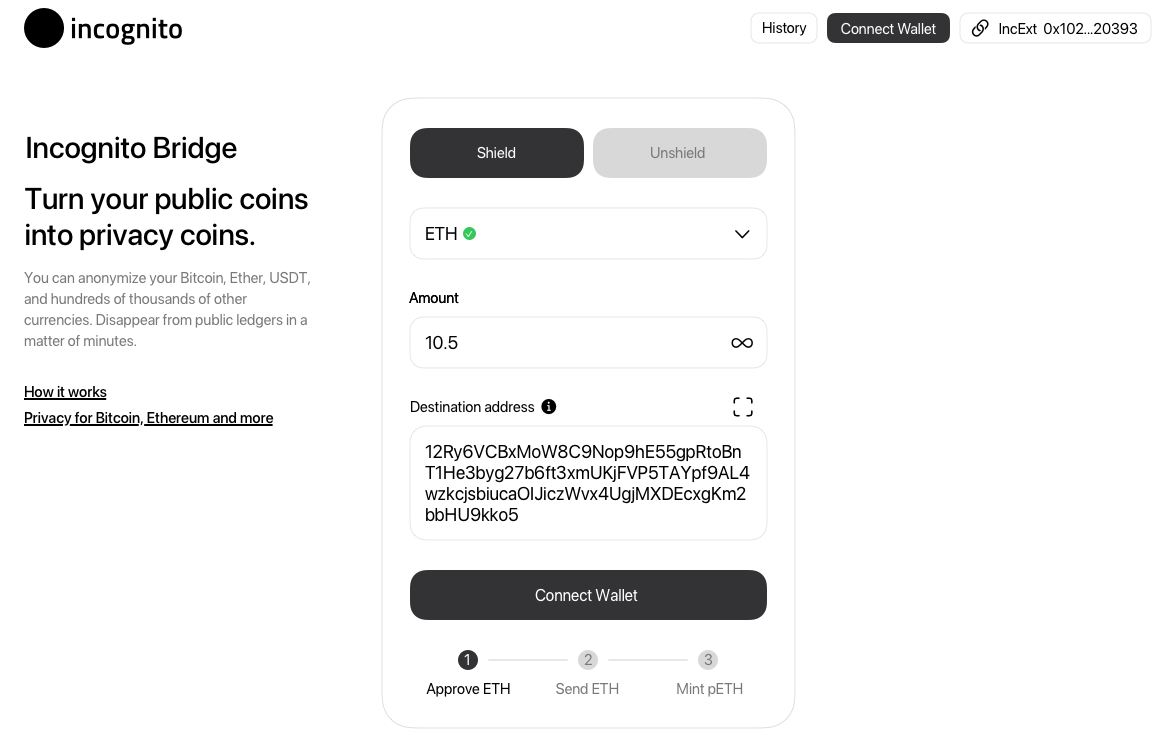
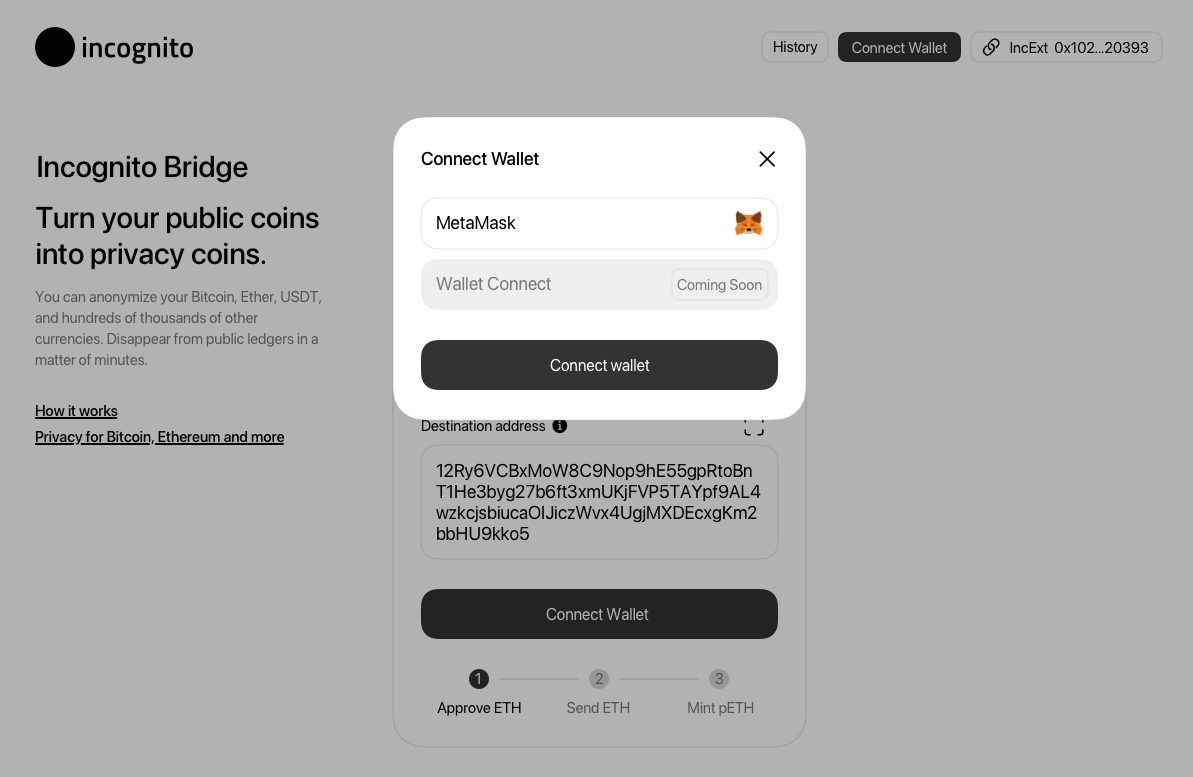
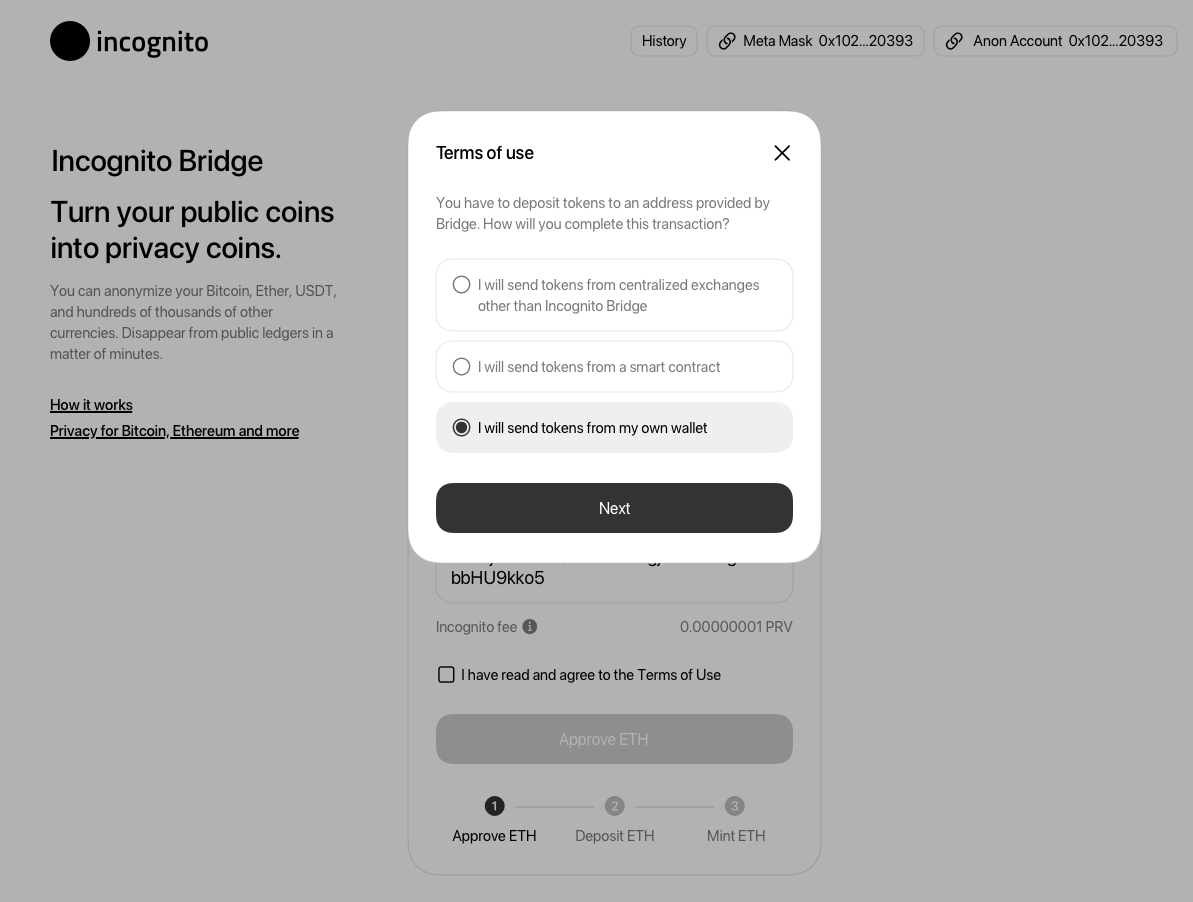
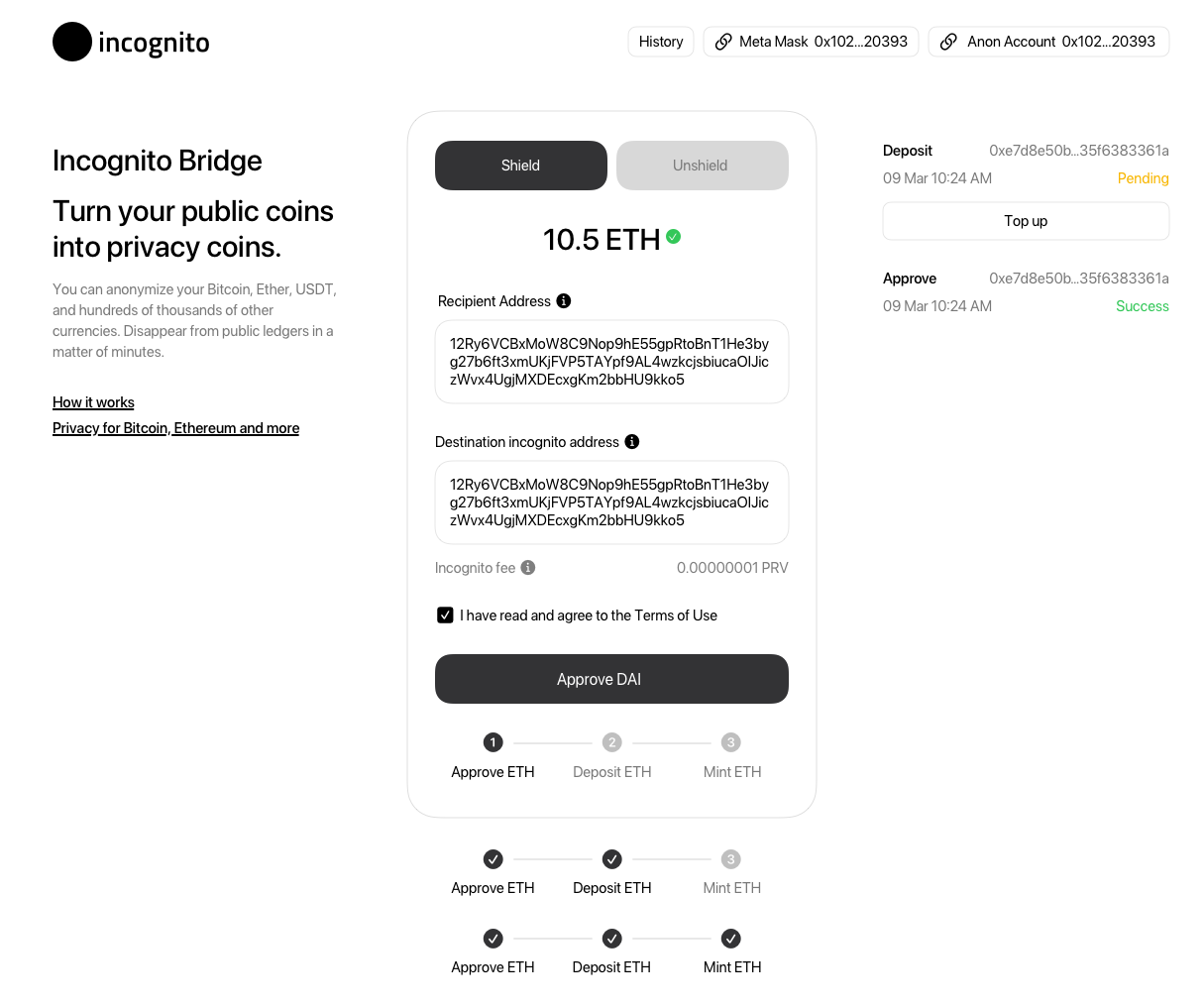
You will see each step in your transaction history, so now you can identify exactly where it failed and retry directly from the history.
Extension mockup - History:
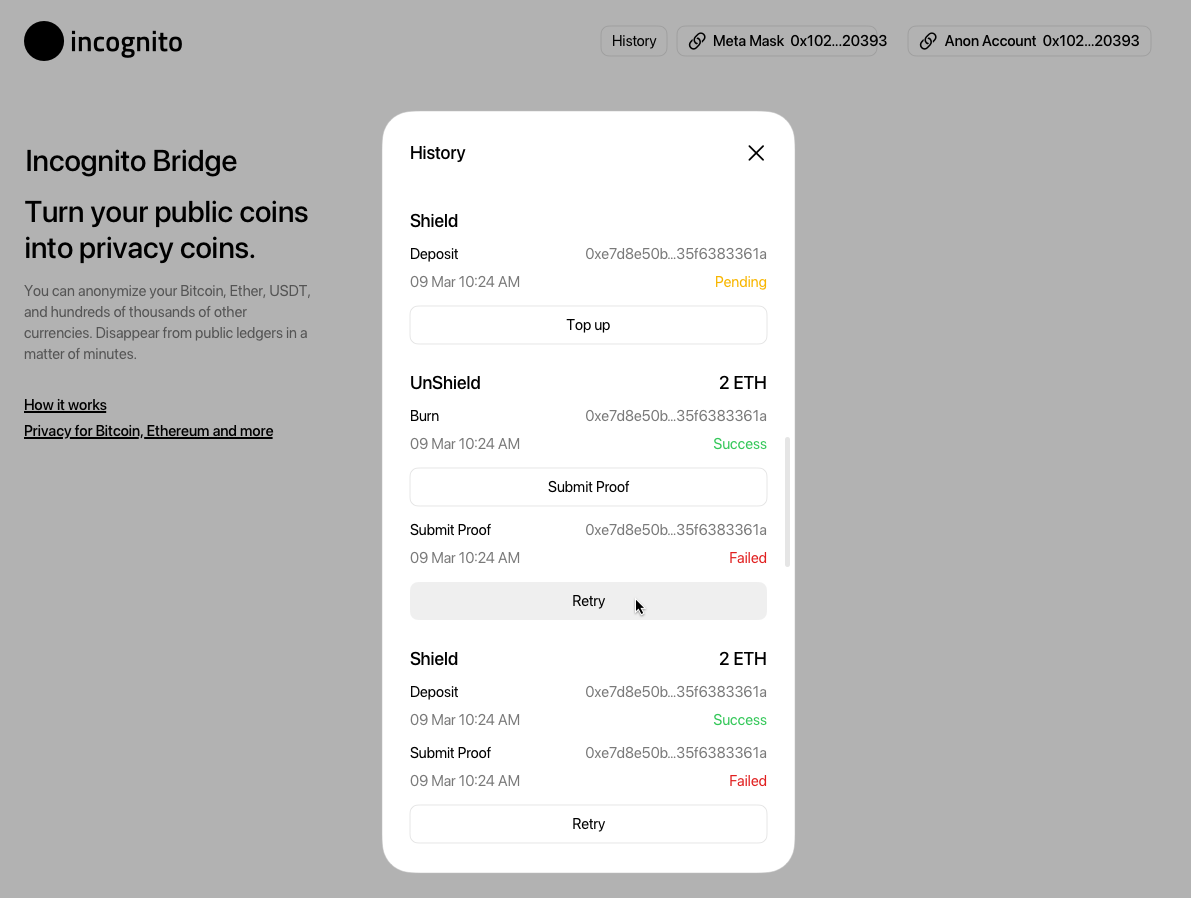
Unshielding:
For unshielding, you will initiate the burn of your privacy coins in the Incognito network, and then submit a proof to release locked coins. If a proof submission fails, you will be able to retry it on the history page.
Extension mockup - Unshielding:
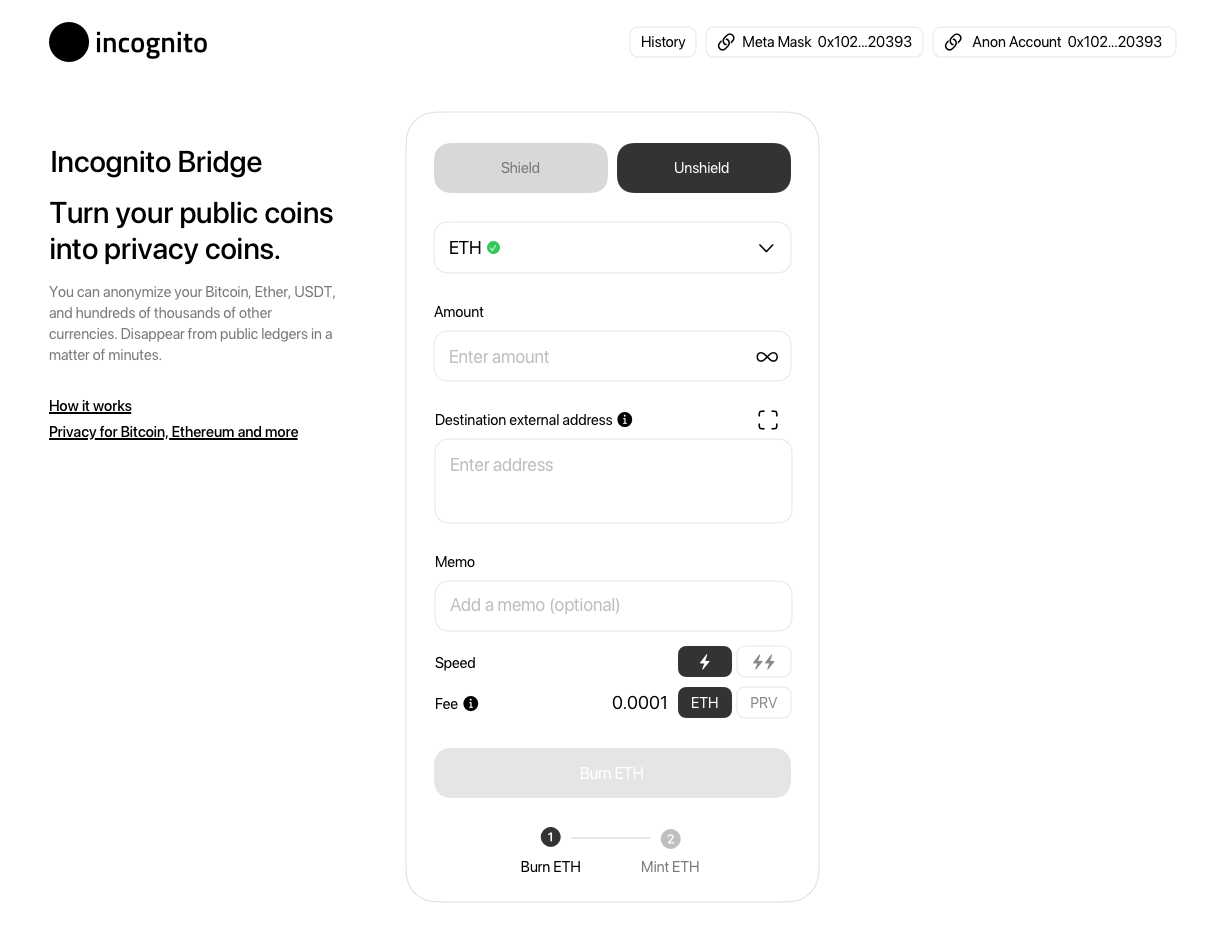
Key results:
Decrease the number of unsuccessful shielding/unshielding transactions, and give users control over the process.
Release timeline:
- Extension v1 (April)
- Audit (May)
- Official release (May-Jun)
Note: This flow is only for the web extension at this point. If you do not use Metamask, you will still be able to shield with the Incognito app and send your crypto to the web extension as an in-network transaction.
What do you think about the new flow? And what do you want to see next? Let me know below!
